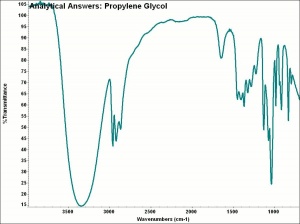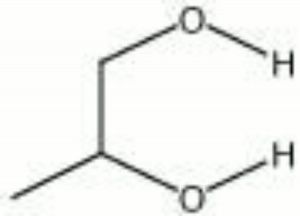Difference between revisions of "Propylene glycol"
Jump to navigation
Jump to search
m (Text replace - "== Authority ==" to "== Sources Checked for Data in Record ==") |
m (Text replace - "\[http:\/\/cameo\.mfa\.org\/materials\/fullrecord\.asp\?name=([^\s]+)\s(.*)\]" to "$2") |
||
| Line 1: | Line 1: | ||
== Description == | == Description == | ||
| − | A viscous hygroscopic liquid commonly used as a nontoxic [ | + | A viscous hygroscopic liquid commonly used as a nontoxic [[antifreeze|antifreeze]] additive in food and drinks. Propylene glycol also acts as an [[inhibitor|inhibitor]] for mold and bacteria. Industrially, it is used as a [[solvent|solvent]] and [[emulsifier|emulsifier]] for [[synthetic%20resin|synthetic resins]], [[rosin|rosin]], and [[essential%20oil|essential oils]]. Propylene glycol oxidizes with mild heat to form [[acetic%20acid|acetic]], [[pyruvic%20acid|pyruvic]], and [[lactic%20acid|lactic]] acids. |
== Synonyms and Related Terms == | == Synonyms and Related Terms == | ||
Revision as of 10:35, 10 May 2016
Description
A viscous hygroscopic liquid commonly used as a nontoxic Antifreeze additive in food and drinks. Propylene glycol also acts as an Inhibitor for mold and bacteria. Industrially, it is used as a Solvent and Emulsifier for synthetic resins, Rosin, and essential oils. Propylene glycol oxidizes with mild heat to form acetic, pyruvic, and lactic acids.
Synonyms and Related Terms
1,2-propanediol; methyl glycol; 1,2-dyhydroxypropane; methylethylene glycol
Other Properties
Miscible with water, acetone, chloroform. Soluble in ether.
| Composition | C3H8O2 |
|---|---|
| CAS | 57-55-6 |
| Melting Point | -59 |
| Density | 1.036 |
| Molecular Weight | mol. wt.=76.09 |
| Boiling Point | 188.2 |
Hazards and Safety
Ingestion and inhalation may cause minor problems. Skin contact may be irritating and defatting. Flammable. Flash point = 99C (210F)
Mallinckrodt Baker: MSDS
Sources Checked for Data in Record
- The Merck Index, Martha Windholz (ed.), Merck Research Labs, Rahway NJ, 10th edition, 1983
- MSDS Sheet

